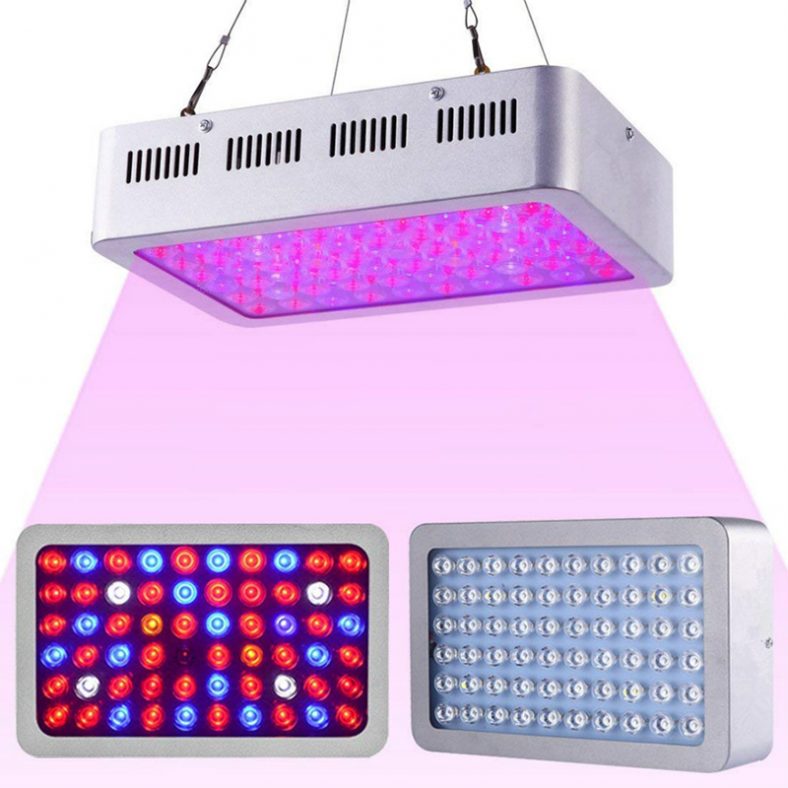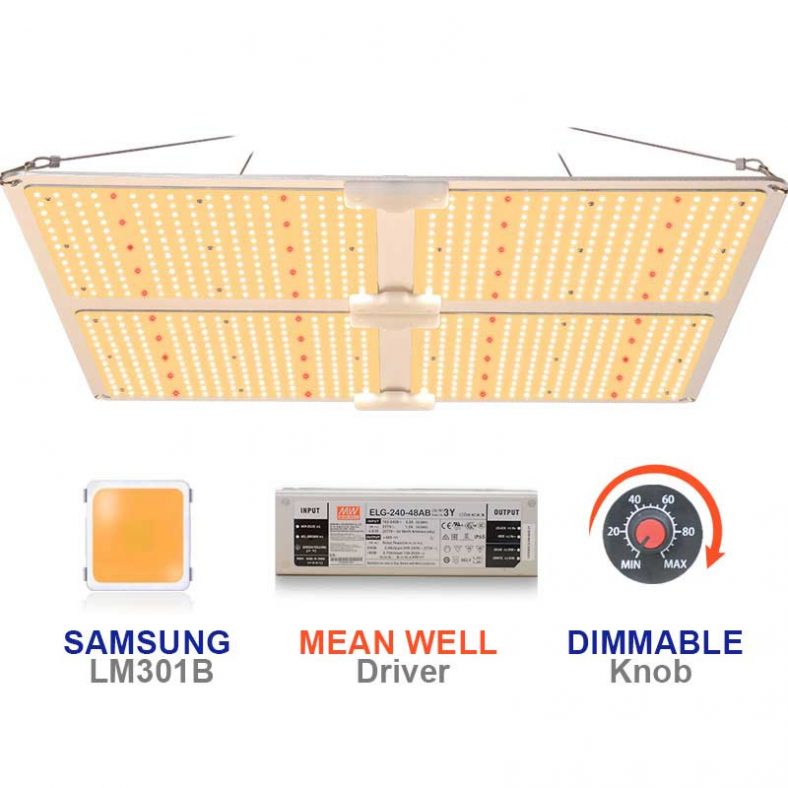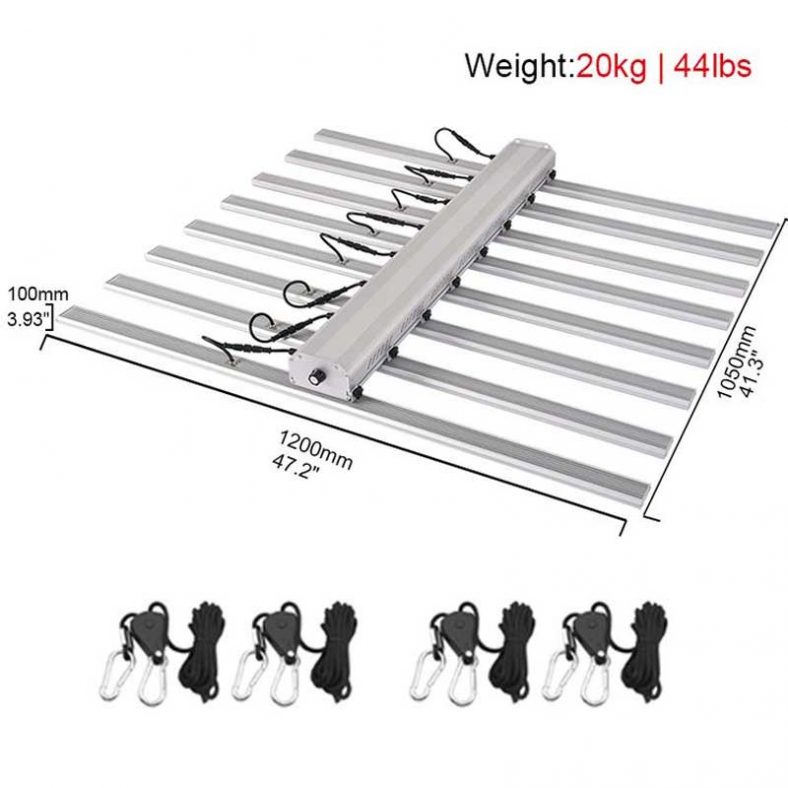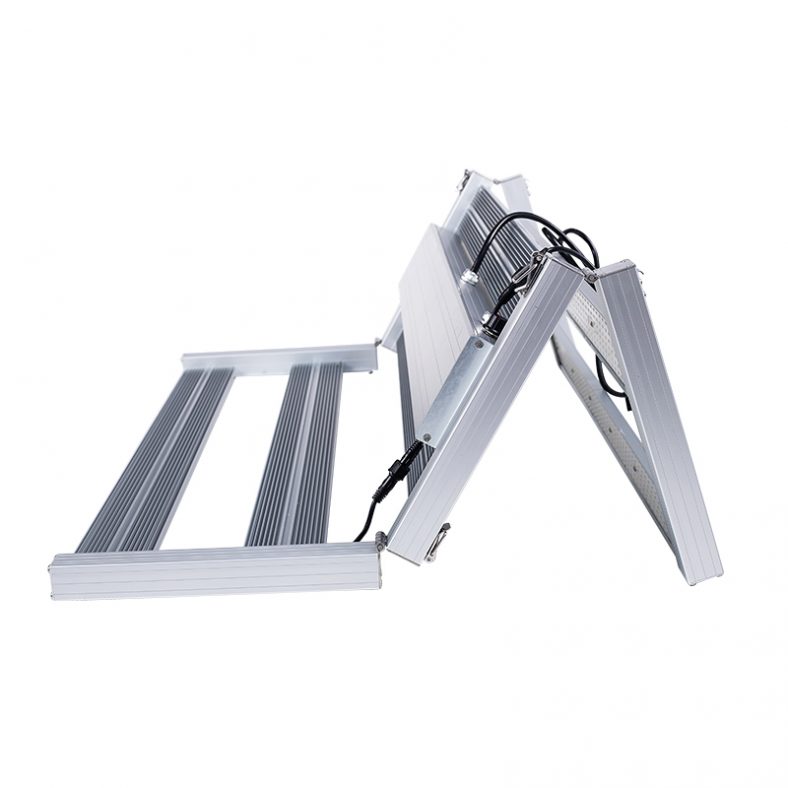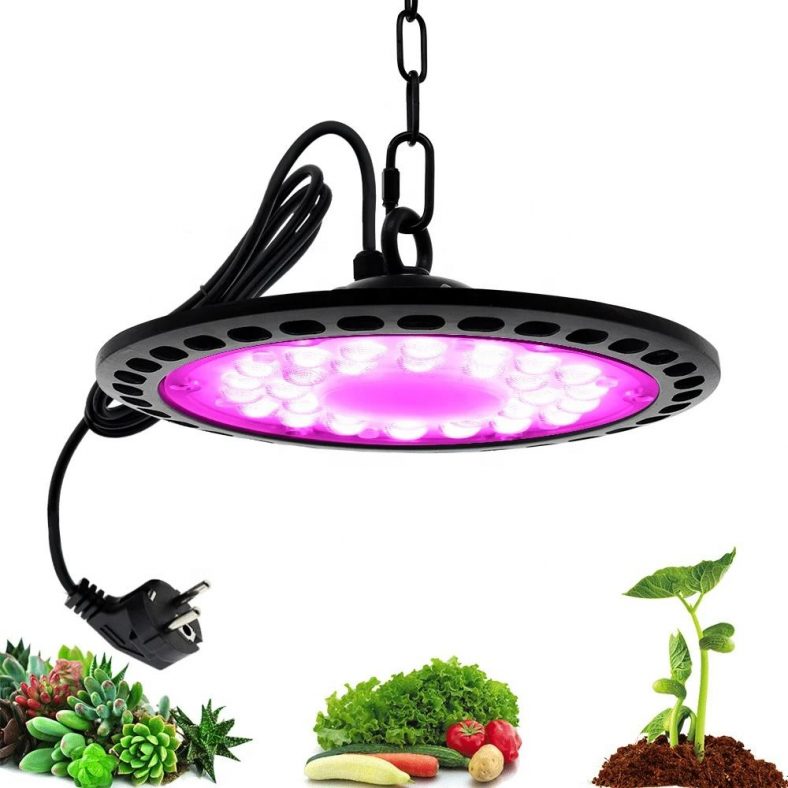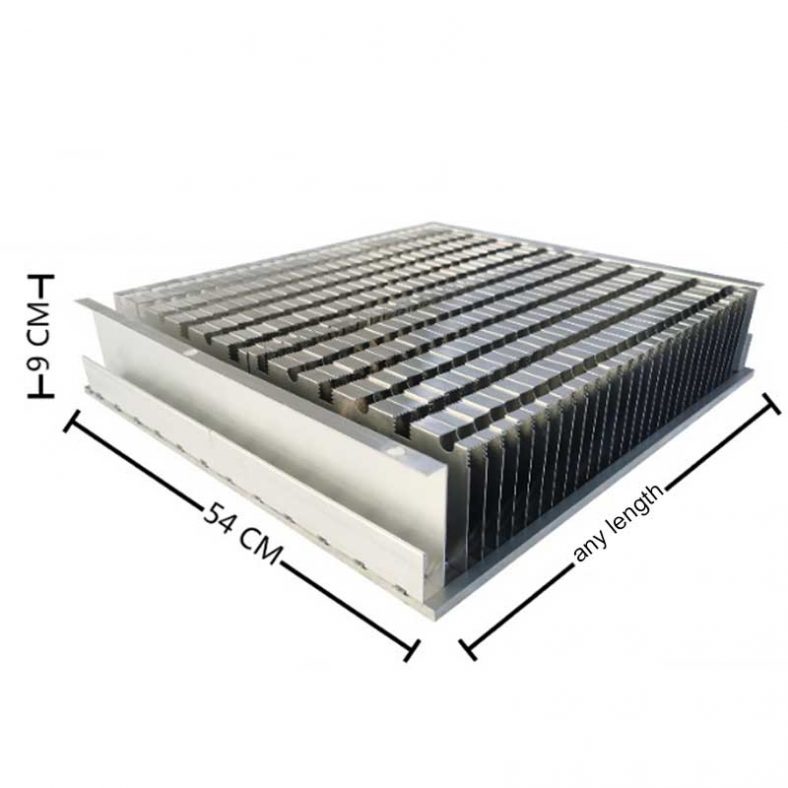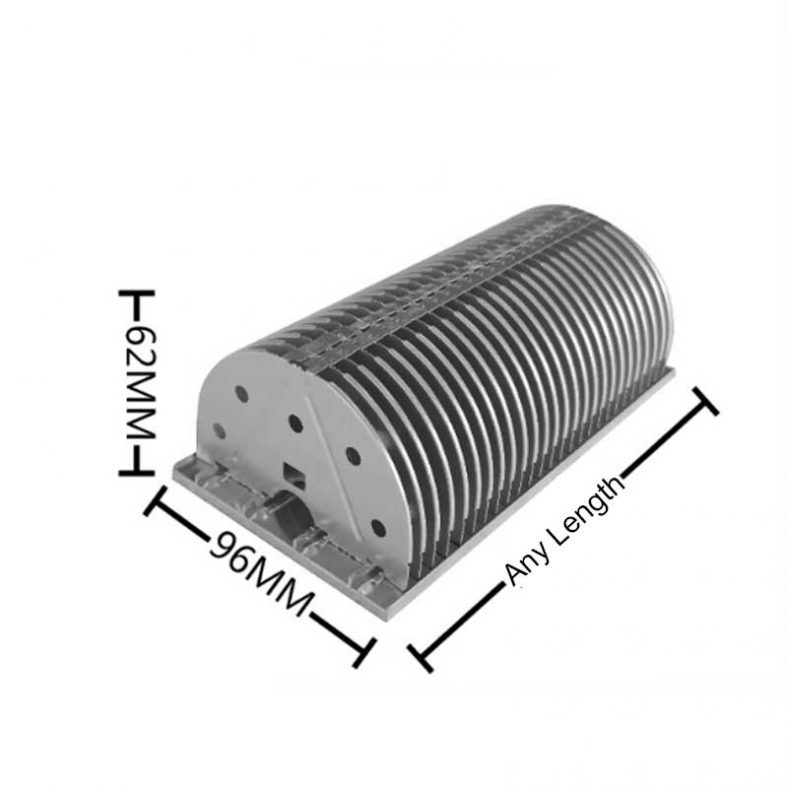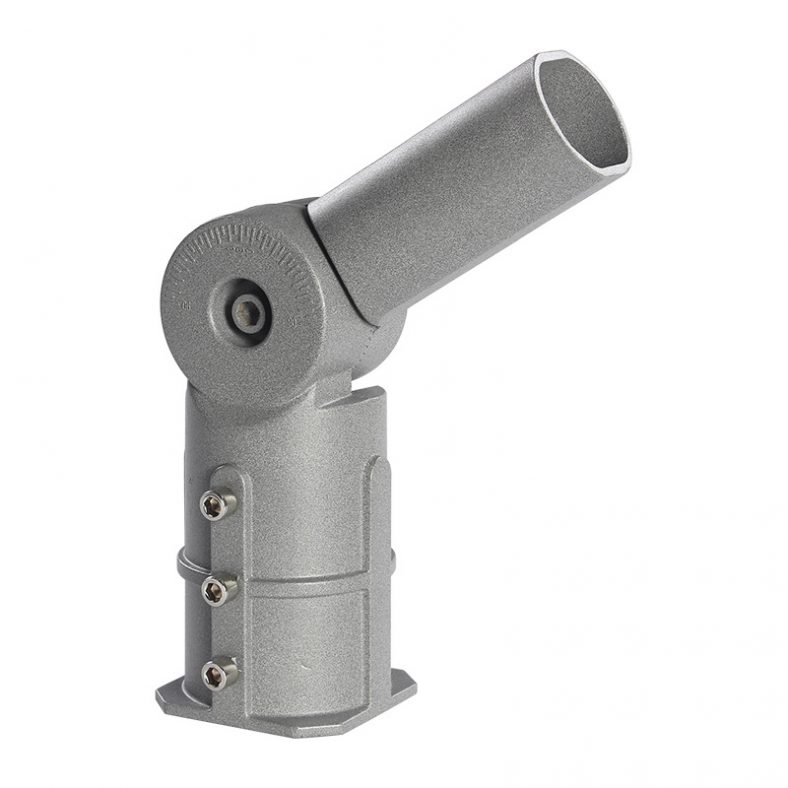
LED Grow Lights Manufacturer
LED Grow Lights to meet your every need.
LED grow light provide a higher quality illumination day in and day out at a lower cost than traditional bulbs. LED grow light are specialized plantation lights designed to illuminate large grow areas. As the professional LED grow light manufacturer and supplier in China, Wandan Lighting focuses on R&D, manufacturing and selling reliable LED grow lights. If you are an LED grow light distributor, wholesaler, LED grow light contractor, or a grower who needs large quantities of LED grow lights, Wandan Lighting is your best choice. We have produced LED grow lights for more than 11 years. The power of Wandan Lighting comes with its focus on energy-efficient, superior indoor lighting.With rich production experience, Wandan Lighting can manufacture LED grow lights that meet your various requirements. Scroll down for more information and FAQs about LED grow light.
LED Grow Lights
Wandan Lighting specialist offers a wide variety of LED Grow Lights to meet your every need.
LED grow lights are specialized lighting fixtures that use light-emitting diodes (LEDs) to produce light in a specific range of wavelengths that are ideal for promoting plant growth. These lights are commonly used by indoor gardeners, commercial greenhouse operators, and cannabis cultivators to provide plants with the light they need to grow and flourish.
LED grow lights are preferred over traditional lighting methods, such as fluorescent or high-pressure sodium (HPS) lights, because they are more energy-efficient and have a longer lifespan. LED grow lights can be tailored to emit specific wavelengths of light that are most beneficial for plant growth, such as red and blue light, while minimizing the amount of heat produced.
When selecting LED grow lights, it’s important to consider the specific needs of your plants, the size of your growing space, and your budget. Different plants require different amounts of light, so it’s important to choose a grow light that provides the appropriate spectrum and intensity for your specific plants.
It’s also important to consider the quality of the LED grow lights, as cheaper models may not provide the full spectrum of light that plants need or may not be as durable or efficient as higher-quality models. Investing in high-quality LED grow lights can result in healthier, more productive plants and a more efficient and cost-effective growing operation.
Relate LED Grow Lights
Wandan Lighting specialist offers a wide variety of LED Grow Lights Lights to meet your every need.
LED Grow Lights Kits/Parts
Wandan Lighting specialist offers a wide variety of LED Grow Lights to meet your every need.
LED Grow Lights Buy guide
Wandan Lighting specialist offers a wide variety of LED Grow Lights to meet your every need.
Grow lights are specialized artificial lighting systems designed to promote plant growth by providing plants with the light they need to photosynthesize and thrive. Grow lights are commonly used by indoor gardeners, commercial greenhouse operators, and cannabis cultivators to provide light to plants that cannot get enough sunlight naturally.
Grow lights can be used to supplement natural sunlight or can be used as the sole source of light for indoor plants. They come in a variety of different types, including LED, fluorescent, high-pressure sodium (HPS), and metal halide (MH) lights. Each type of grow light emits different wavelengths of light, and the specific type of light required will depend on the specific needs of the plants being grown.
Grow lights can be used to grow a wide variety of plants, including herbs, vegetables, fruits, and ornamental plants. They are particularly useful for growing plants in areas with limited access to natural light, such as basements or apartments, and can be used to extend the growing season for outdoor plants.
When selecting grow lights, it’s important to consider the specific needs of your plants, the size of your growing space, and your budget. Different types of grow lights will be better suited for different growing situations, so it’s important to do your research and choose the right type of grow lights for your specific needs.
There are several types of LED grow lights available on the market, each with its own advantages and disadvantages. Here are some of the most common types of LED grow lights:
- Full-spectrum LED grow lights: These lights provide a full spectrum of light, including all colors of the rainbow, and are designed to mimic natural sunlight as closely as possible. They are ideal for use throughout the entire plant lifecycle, from seedling to flowering.
- Red and blue LED grow lights: These lights are designed to provide the specific wavelengths of light that plants need most for photosynthesis and growth. Red light promotes flowering and fruiting, while blue light is best for vegetative growth.
- White LED grow lights: These lights provide a broad spectrum of light and are often used in combination with red and blue LED grow lights to provide a balanced light spectrum for plants.
- COB (chip-on-board) LED grow lights: These lights use multiple LED chips mounted on a single circuit board to produce a high-intensity light that can penetrate deep into the plant canopy. They are often used in commercial grow operations.
- Quantum board LED grow lights: These lights use a series of smaller LED chips mounted on a board to provide a more even and uniform light distribution, resulting in better plant growth and yields.
- Vertical LED grow lights: These lights are designed for use in vertical growing systems, where plants are stacked on top of each other. They provide a focused and directional light that can be adjusted to provide the right amount of light for each level of the growing system.
When choosing LED grow lights, it’s important to consider the specific needs of your plants, the size of your growing space, and your budget. Different types of LED grow lights will be better suited for different growing situations, so it’s important to do your research and choose the right type of LED grow lights for your specific needs.
The distance between LED grow lights and plants will depend on the specific type of LED grow light being used, as well as the growth stage of the plants. Different types of LED grow lights have different optimal distances and coverage areas, and the light intensity may vary depending on the wattage and the angle of the light beam.
As a general guideline, LED grow lights should be positioned between 6 to 24 inches (15 to 60 cm) away from the top of the plants, with closer distances during the vegetative stage and further distances during the flowering stage. In the vegetative stage, LED grow lights can be positioned closer to the plants to encourage growth and development, while during the flowering stage, LED grow lights should be positioned further away to prevent light burn and to provide even coverage.
It’s important to monitor the plants closely and to adjust the distance between the LED grow lights and the plants as needed, based on the specific requirements of the plants and the type of LED grow light being used. It’s also important to ensure that the plants are receiving sufficient light coverage across all parts of the canopy, and to avoid crowding the plants or blocking the light with obstructions. Overall, careful observation and experimentation can help determine the optimal distance and positioning for LED grow lights to promote healthy plant growth and development.
The length of time that grow lights should be on will depend on the specific type of plants being grown, as well as the growth stage of the plants. Different types of plants have different optimal photoperiods, which refers to the length of time they should be exposed to light each day in order to promote healthy growth and development.
As a general guideline, most plants require between 12 and 18 hours of light per day during the vegetative stage, and between 10 and 12 hours of light per day during the flowering stage. Some plants, such as succulents or cacti, may require less light overall, while other plants, such as tropical plants or vegetables, may require more.
It’s important to monitor the plants closely and to adjust the length of time that grow lights are on as needed, based on the specific requirements of the plants and the growth stage they are in. Overexposure to light can be harmful to plants, causing light burn and other damage, while underexposure can result in stunted growth or poor yields.
Overall, careful observation and experimentation can help determine the optimal length of time that grow lights should be on for a specific type of plant and growth stage. It’s also important to provide adequate periods of darkness for plants to rest and recover, and to avoid overexposure to artificial light.
Here are some general steps on how to hang grow lights:
- Determine the height and coverage area needed for your plants based on the specific type of grow light being used, as well as the size and growth stage of your plants.
- Choose a sturdy mounting system that can support the weight of your grow lights, such as a chain, cable, or rope. Make sure the mounting system is adjustable, so that you can easily change the height of the lights as needed.
- Install the mounting system securely to the ceiling or support structure, using appropriate hardware such as screws, hooks, or clamps.
- Attach the grow lights to the mounting system using the hardware provided by the manufacturer, such as S-hooks or carabiners.
- Adjust the height and angle of the grow lights as needed to provide optimal coverage for your plants. Be sure to keep the lights at a safe distance from the plants to avoid light burn.
- Plug in the grow lights and turn them on, and monitor the plants closely to ensure they are receiving adequate light and to make any necessary adjustments to the height or angle of the lights.
- Be sure to follow the manufacturer’s instructions for the specific type of grow light being used, including recommended hanging height and coverage area, as well as any other safety precautions or guidelines.
Overall, it’s important to take the time to properly install and adjust grow lights to ensure they are providing the optimal spectrum and intensity of light for your plants, while also being safe and secure. With careful planning and attention to detail, hanging grow lights can be an effective way to support healthy plant growth and development.
The amount of electricity that grow lights use can vary depending on the type and size of the lights being used, as well as how many lights are used and how long they are used for. Generally speaking, LED grow lights are the most energy-efficient option, while high-intensity discharge (HID) lights such as metal halide (MH) and high-pressure sodium (HPS) lights are less efficient but may provide higher intensity light.
LED grow lights are known for being very energy-efficient and can use up to 60% less energy compared to HID lights, while still providing the same or even better light intensity and spectrum. A typical 1000-watt HPS grow light can consume up to 1.5 kWh of electricity per day, while a 1000-watt LED grow light may only use 0.5 kWh of electricity per day.
It’s important to consider the electricity usage and associated costs when choosing and using grow lights, as well as to make sure that the electrical system and circuit can handle the load of the grow lights. In some cases, it may be necessary to use a dedicated circuit or to upgrade the electrical system to ensure safe and effective use of grow lights.
Growing weed with light involves using grow lights to provide the optimal spectrum and intensity of light for cannabis plants to grow and develop. Here are the general steps for growing weed with light:
- Choose the appropriate grow lights for your setup, based on the size and type of plants being grown, as well as your budget and energy usage. LED grow lights are the most energy-efficient option, while high-intensity discharge (HID) lights such as metal halide (MH) and high-pressure sodium (HPS) lights may provide higher intensity light.
- Set up the grow lights at the appropriate height and angle to provide optimal coverage for your plants, while also avoiding light burn. As a general rule, most cannabis plants should be kept at least 12 to 18 inches away from the grow lights to avoid light burn.
- Choose a suitable growing medium, such as soil or hydroponic setup, and plant your cannabis seeds or clones.
- Provide proper water and nutrients to your plants, based on their growth stage and specific needs.
- Monitor the temperature and humidity levels of your grow room or tent to ensure they are within the optimal range for cannabis growth.
- Adjust the height and intensity of the grow lights as needed to support healthy plant growth and development, based on the specific type of cannabis being grown and its growth stage.
- Continue to monitor and care for your cannabis plants, including pruning, training, and pest control as needed.
It’s important to follow best practices for growing cannabis with light, including using appropriate grow lights and equipment, providing proper water and nutrients, and maintaining optimal environmental conditions. With careful attention and care, growing weed with light can be an effective way to support healthy cannabis growth and development. However, it’s also important to be aware of and follow any legal restrictions or regulations related to growing cannabis in your area.
Some grow lights do emit UV (ultraviolet) light, but not all of them. Whether or not a grow light emits UV light depends on the type of light and the specific spectrum it is designed to produce.
For example, some metal halide (MH) and high-pressure sodium (HPS) grow lights emit UV light as part of their spectrum, which can be beneficial for some plants but can also cause damage to human skin and eyes. LED grow lights, on the other hand, typically do not emit UV light unless they are specifically designed to do so.
It’s important to note that exposure to high levels of UV light can be harmful to plants and can also cause damage to human skin and eyes. If you are using a grow light that emits UV light, it’s important to follow appropriate safety precautions, such as wearing protective eyewear and limiting exposure time. Additionally, it’s important to choose a grow light with the appropriate spectrum and intensity for the specific type of plants being grown, while also considering safety and energy efficiency.
LED grow lights are a specific type of grow light that uses light-emitting diodes (LEDs) to produce light in a specific range of wavelengths that are ideal for promoting plant growth. While all LED lights are grow lights in the sense that they can be used to promote plant growth, not all grow lights are LED lights.
The main difference between LED grow lights and other types of grow lights, such as fluorescent, high-pressure sodium (HPS), and metal halide (MH) lights, is the spectrum of light they produce. LED grow lights can be tailored to emit specific wavelengths of light that are most beneficial for plant growth, such as red and blue light, while minimizing the amount of heat produced.
In contrast, other types of grow lights emit a broader spectrum of light that includes wavelengths that may not be as beneficial for plant growth. They also tend to produce more heat than LED grow lights, which can be a concern in smaller growing spaces or in situations where heat buildup is a problem.
LED grow lights are also generally more energy-efficient and have a longer lifespan than other types of grow lights, which can make them a more cost-effective choice in the long run.
Overall, LED grow lights offer a more targeted and efficient way to provide plants with the light they need to grow and flourish, and are often the preferred choice for indoor gardeners, commercial greenhouse operators, and cannabis cultivators.
Yes, grow lights can be very effective in promoting plant growth and can be an essential tool for indoor gardeners and commercial growers. Grow lights work by providing plants with the light they need to photosynthesize and grow, and can be used to supplement natural sunlight or to provide the sole source of light for indoor plants.
The effectiveness of grow lights will depend on a variety of factors, including the type of grow light used, the specific needs of the plants being grown, the intensity and duration of the light provided, and the growing environment. Different plants require different amounts and types of light, so it’s important to choose the right type of grow light and to provide plants with the light they need to grow and thrive.
Grow lights can be particularly useful for growing plants in areas with limited access to natural light, such as basements or apartments, and can be used to extend the growing season for outdoor plants. They can also be used to grow plants that would not normally thrive in a particular environment, such as tropical plants in colder climates.
Overall, grow lights can be a very effective tool for promoting plant growth and can be an essential component of indoor gardening and commercial growing operations. However, it’s important to choose the right type of grow light and to provide plants with the light they need to grow and flourish.
Using grow lights can be a great way to promote plant growth in indoor environments or to extend the growing season for outdoor plants. Here are some general steps to follow when using grow lights:
- Choose the right type of grow light: There are different types of grow lights available, including LED, fluorescent, high-pressure sodium (HPS), and metal halide (MH) lights. Choose the type of grow light that best suits your specific needs and the needs of the plants you are growing.
- Determine the light requirements for your plants: Different plants require different amounts and types of light. Research the light requirements for the specific plants you are growing, including the duration of light exposure, the intensity of light required, and the specific wavelengths of light that are most beneficial.
- Position the grow lights: Position the grow lights at the appropriate height and distance from your plants, based on the type of grow light and the light requirements for your plants. Be sure to position the lights so that they provide even coverage across all of your plants.
- Set the light cycle: Most plants require a certain amount of darkness each day to properly grow and develop. Determine the appropriate light cycle for your plants, including the duration of light exposure and the amount of darkness required, and set your grow lights accordingly.
- Monitor your plants: Keep an eye on your plants and monitor their growth and health regularly. Adjust the position and duration of the grow lights as needed to ensure that your plants are getting the light they need to grow and flourish.
By following these general steps and paying close attention to the specific needs of your plants, you can effectively use grow lights to promote plant growth and maximize your indoor or outdoor growing potential.
Yes, plants can grow in artificial light as long as the light provides the necessary spectrum of wavelengths required for photosynthesis. Natural sunlight provides a full spectrum of light, including all the colors of the rainbow, but artificial light sources such as grow lights can also provide the specific wavelengths of light that plants need to grow and thrive.
Different types of plants have different light requirements, so it’s important to choose the right type of artificial light and to provide the right spectrum and intensity of light for the specific plants you are growing. LED grow lights, for example, are a popular choice for indoor gardening because they can be customized to provide the specific wavelengths of light that plants need, while also being energy-efficient and long-lasting.
It’s also important to keep in mind that plants still require periods of darkness for healthy growth, so it’s important to set the light cycle for your grow lights to allow for periods of darkness. Overall, while natural sunlight is ideal for plant growth, artificial light can be a suitable alternative for indoor gardening or for extending the growing season for outdoor plants.
No, mushrooms do not need light to grow. In fact, mushrooms actually grow best in darkness or low light conditions. Mushrooms are a type of fungus that grows in dark, humid environments, such as the forest floor or in caves. They do not require light for photosynthesis like plants do, as they obtain their nutrients from organic matter in their surroundings.
When growing mushrooms indoors or in controlled environments, it’s important to provide the right amount of humidity and temperature, as well as a suitable substrate for the mushrooms to grow on. In some cases, low levels of light can be used to help regulate the growth and development of mushrooms, but this is not required for successful mushroom cultivation.
Overall, mushrooms can be successfully grown in dark or low light conditions, making them a great option for indoor cultivation or for growing in environments with limited access to natural light.
In Minecraft, sugarcane does require light to grow. Like most crops in Minecraft, sugarcane requires a light level of at least 8 in order to grow. This means that sugarcane will not grow in complete darkness, and must be exposed to some form of light in order to grow properly.
Sugarcane can be grown on dirt, grass, or sand blocks that are adjacent to a water source block. Once planted, sugarcane will grow up to three blocks tall over time, as long as the light level is sufficient and the block is not obstructed by other blocks.
To ensure successful sugarcane growth in Minecraft, it’s important to provide adequate light, water, and space for the plants to grow. This can be achieved by planting sugarcane near a water source, providing sufficient lighting (such as torches or other light sources), and spacing the plants at least one block apart to prevent crowding.
While a regular light bulb may emit some light that can be beneficial for plant growth, it is not an ideal light source for growing plants. Regular light bulbs primarily emit light in the yellow to red range, which is not the optimal spectrum of light for plants to undergo photosynthesis and grow. Plants require a full spectrum of light that includes blue, green, and red wavelengths to support their growth and development.
If you are interested in growing plants indoors, it is recommended to use specialized grow lights that provide the optimal spectrum of light for plant growth. LED grow lights are a popular choice for indoor gardening because they can be customized to provide the specific wavelengths of light that plants need, while also being energy-efficient and long-lasting. Other types of grow lights, such as fluorescent lights and high-pressure sodium (HPS) lights, can also be effective for growing plants.
Overall, while a regular light bulb may provide some light for plants, it is not the best option for growing healthy, thriving plants. It’s important to use the right type of grow light to provide the optimal spectrum and intensity of light that plants need for photosynthesis and growth.
Yes, grow lights can burn plants if they are placed too close or are too intense. When grow lights are too close to plants or are too intense, they can cause a condition known as light burn, which can cause the plant’s leaves to turn brown, dry out, and eventually die.
To prevent light burn, it’s important to monitor the distance between the plants and the grow lights, and to adjust the height and intensity of the lights as needed. As a general rule, most plants should be kept at least 12 to 18 inches away from the grow lights to avoid light burn. However, the specific distance will depend on the type of grow light being used, as well as the size and growth stage of the plants.
It’s also important to use grow lights that provide the appropriate spectrum and intensity of light for the specific type of plants being grown, and to follow the manufacturer’s instructions for safe and effective use. With proper care and attention, grow lights can be an effective way to support healthy plant growth and development.


